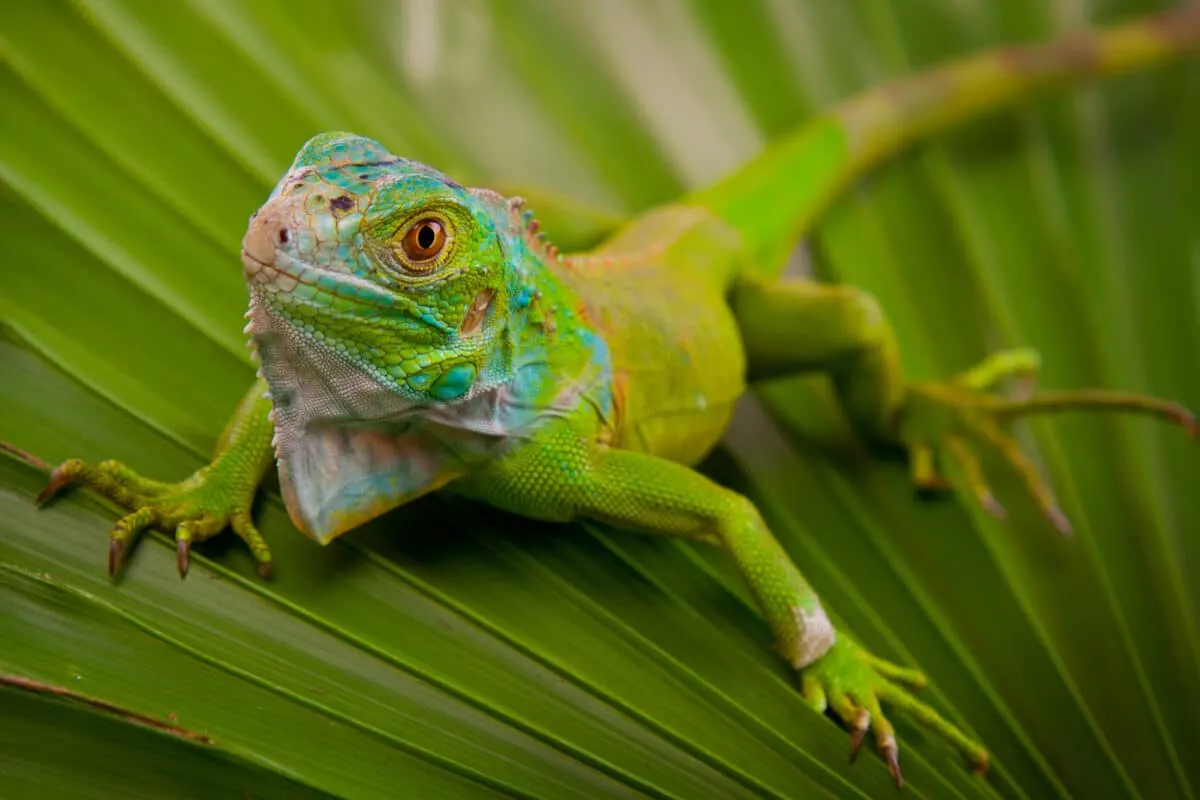Even though green iguanas have a peaceful disposition and an accessible demeanor, it’s vital to remember that they are still wild animals with dangerous fangs. These interesting reptiles may make wonderful pets with the right care and education.
It’s a prevalent fallacy that they may be handled carelessly and without issues. Even if unintentionally, green iguanas may bite when they feel threatened or provoked. You can ensure you and your pet iguana have a safe and happy experience by being aware of the potential risks and implementing the appropriate safety measures.
This essay will detail green iguana bites, offer insightful information, and provide ten crucial strategies for completely avoiding them.
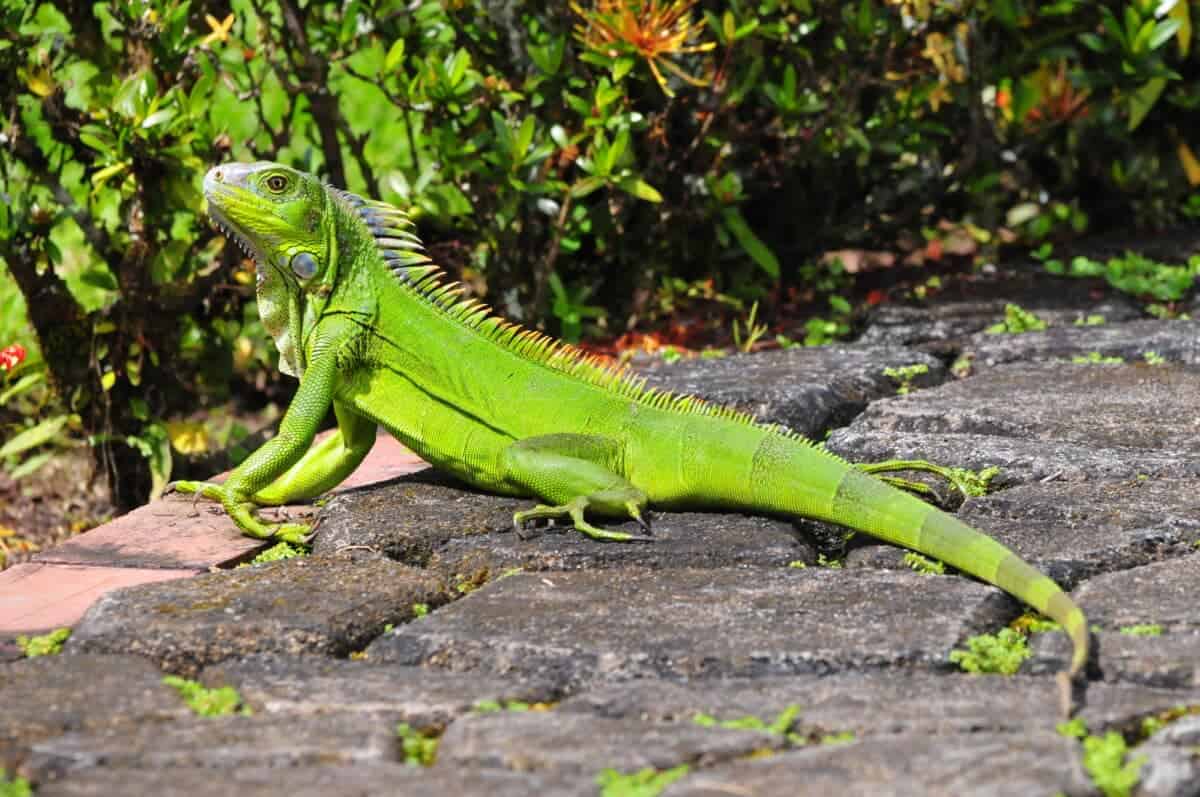
Skip ahead to any section below!
Green Iguana Anatomy and Behavior
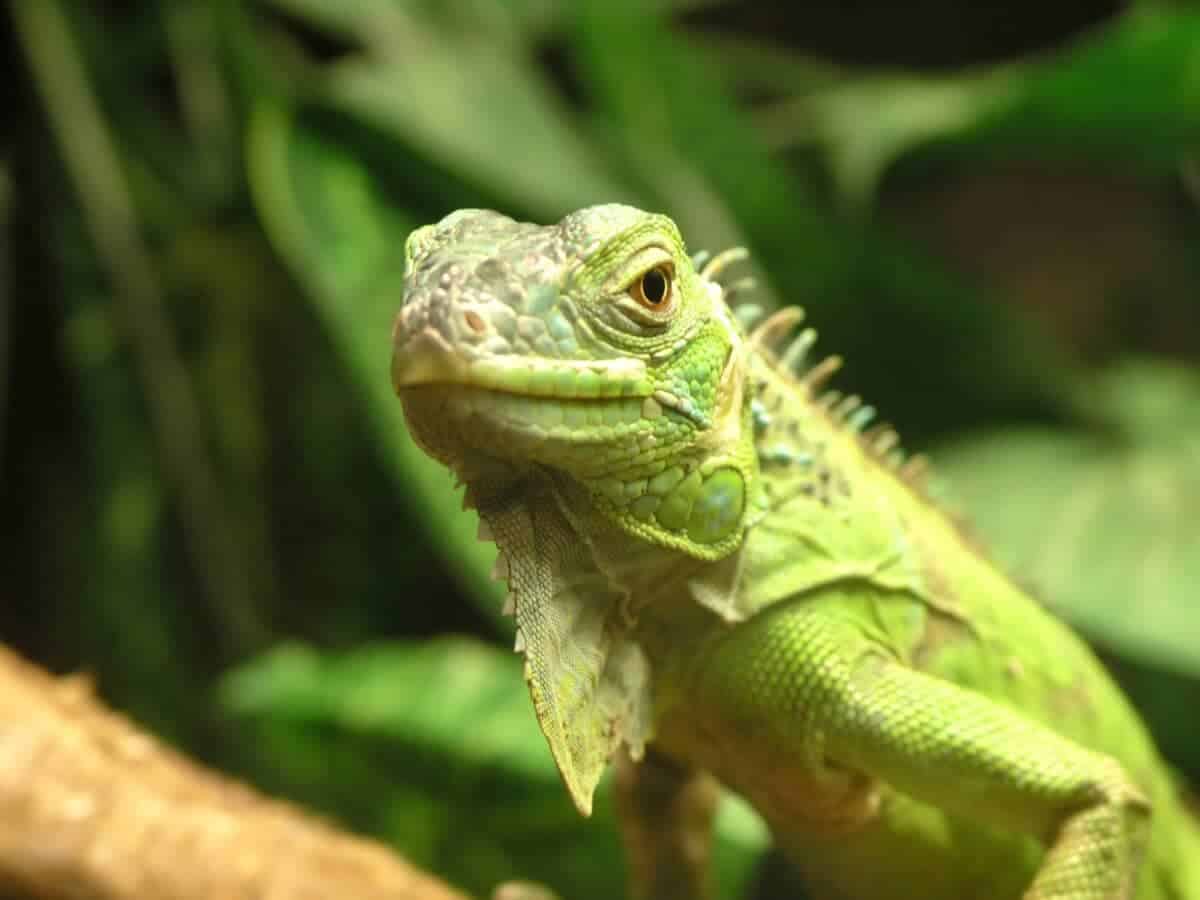
Appearance and Behavior
Known as green iguanas, these lizards can reach lengths of six feet and weigh 20 pounds. They use their long, powerful tail, which is more than half the length of their body, to stay balanced and communicate with other iguanas. The large, flat skulls and strong claws of green iguanas make them excellent climbers.
They are renowned for their vivid green color, which aids in their environment-blending. Green iguanas are peaceful animals enjoying sunbathing and eating leafy greens when not threatened or agitated.
Why do they Bite if Threatened or Startled?
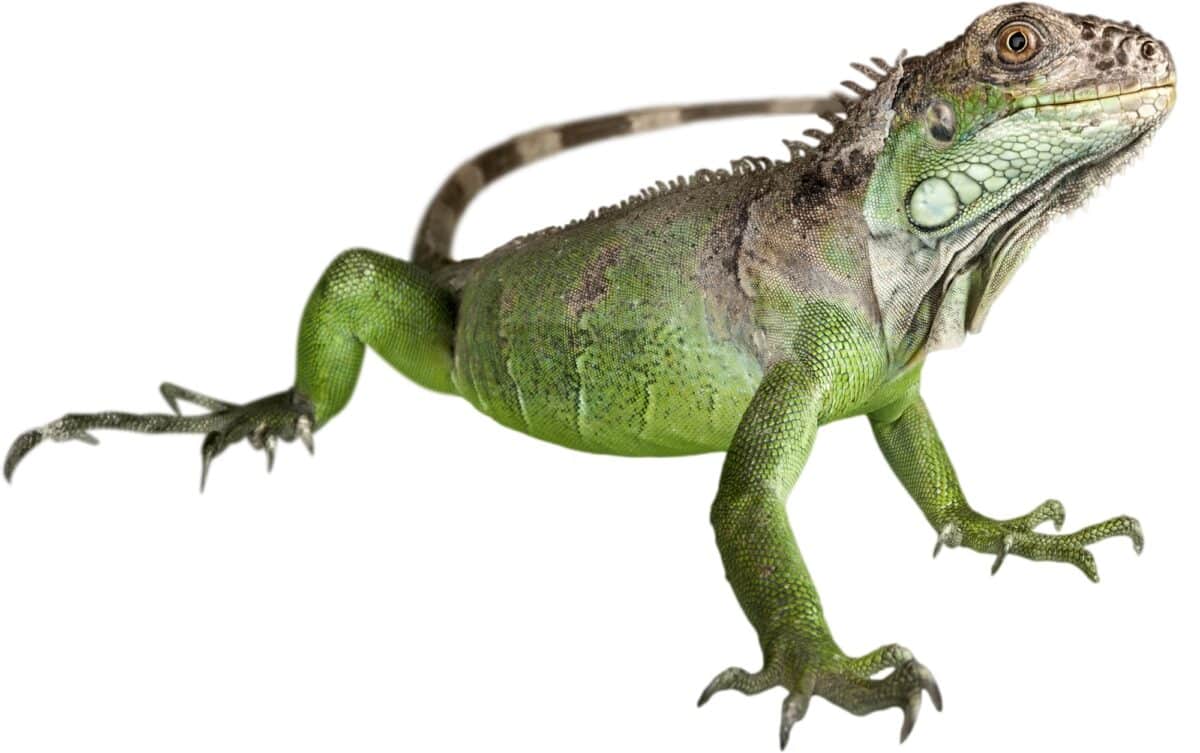
If they feel frightened or provoked, green iguanas may bite people. They are inherently defensive creatures, so they may mistake humans for a threat if they feel confined or terrified.
In addition, green iguanas might become more hostile during the breeding season, which normally lasts from May to October. Male green iguanas may become more aggressive and wary of humans during this time.
Check out: Largest Asian Elephant.
Pointed Teeth
Green iguanas may easily sever skin because of their strong, serrated teeth. Despite not being venomous, their bites can be extremely painful and necessitate medical attention.
Additionally, green iguanas might have bacteria in their mouths that could lead to illnesses should they pierce the skin. A green iguana may also strike out with its strong tail, which has the potential to fracture bones or at least cause bruising. To prevent getting bitten or hurt, handling green iguanas carefully and respectfully is crucial.
Green Iguana Bites’ Symptoms
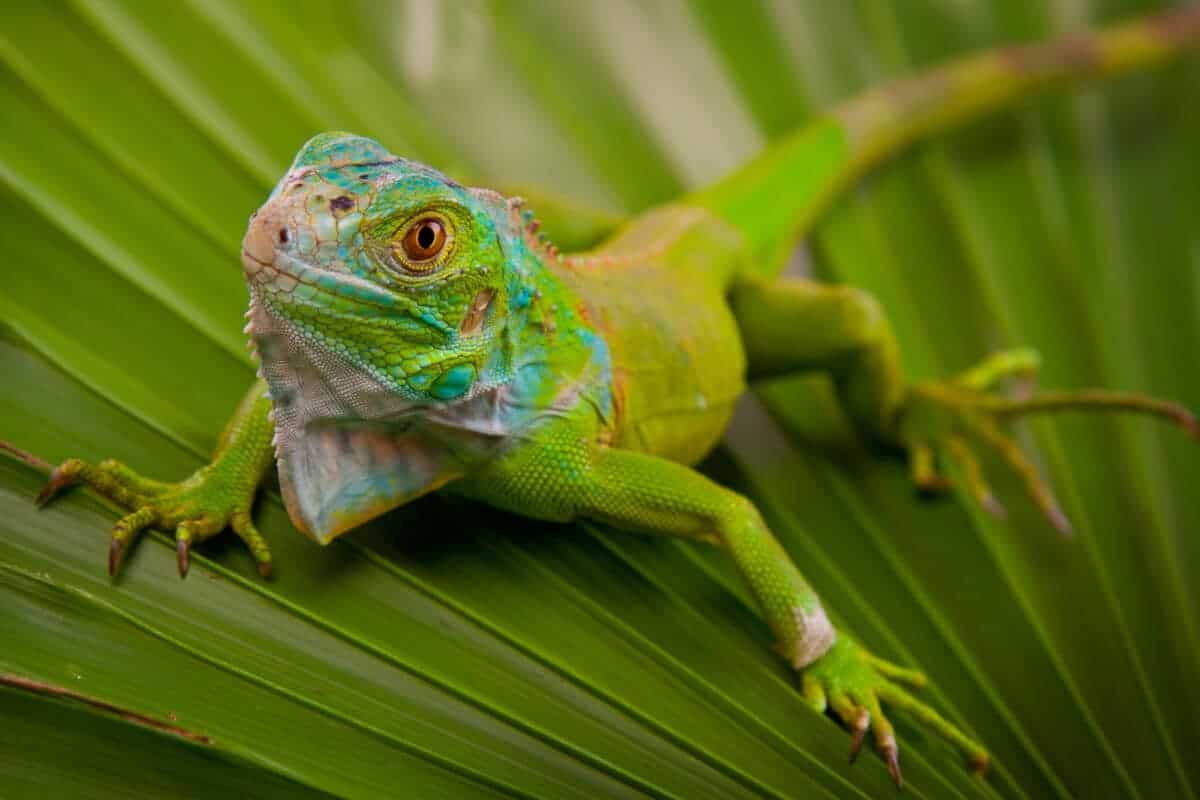
Symptoms of an Iguana Bite
Unexpected green iguana bites can cause instant pain, bleeding, and edema, depending on the bite’s severity. Deep puncture wounds, lacerations, or abrasions on the affected area are typical symptoms of an iguana bite.
In certain instances, the skin may rip off as a result of the bite, exposing the underlying tissue. Iguana bites may be excruciatingly painful and occasionally even shatter bones since they have razor-sharp teeth built specifically to rip plants and flesh.
Check out: The Largest Gorilla.
Risks Connected with an Iguana Bite
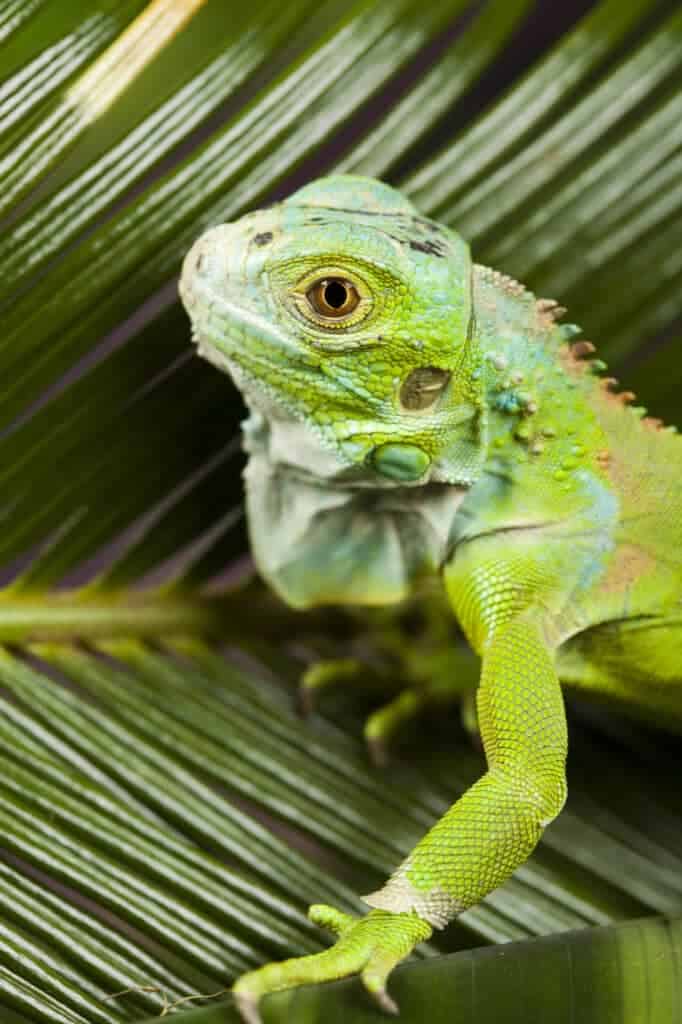
Because of the microorganisms in their saliva, you risk getting sick if an iguana bites you. Iguanas spend a lot of time in trees and other high locations. Thus, a fall from a substantial height might result in serious damage or, in rare and extreme cases, even death.
Green iguanas can occasionally spread salmonella germs through their waste or contaminated objects. As a result, it is crucial to handle them carefully and practice appropriate cleanliness.
What to Do if an Iguana Bites You?
After being bitten by a green iguana, the first step is to promptly cleanse the wound with soap and warm water to lessen the chance of infection. After that, elevate the affected area, apply pressure to the wound if bleeding, and use ice to minimize swelling.
If the incision extends into a muscle or bone or indications of an infection, such as fever, redness, or swelling, appear, get medical assistance. Iguanas may become upset or defensive and lash out even more if you attempt to handle an injury yourself. It is crucial to use due caution and treat iguanas with respect.
Advice to Prevent Green Iguana Bites
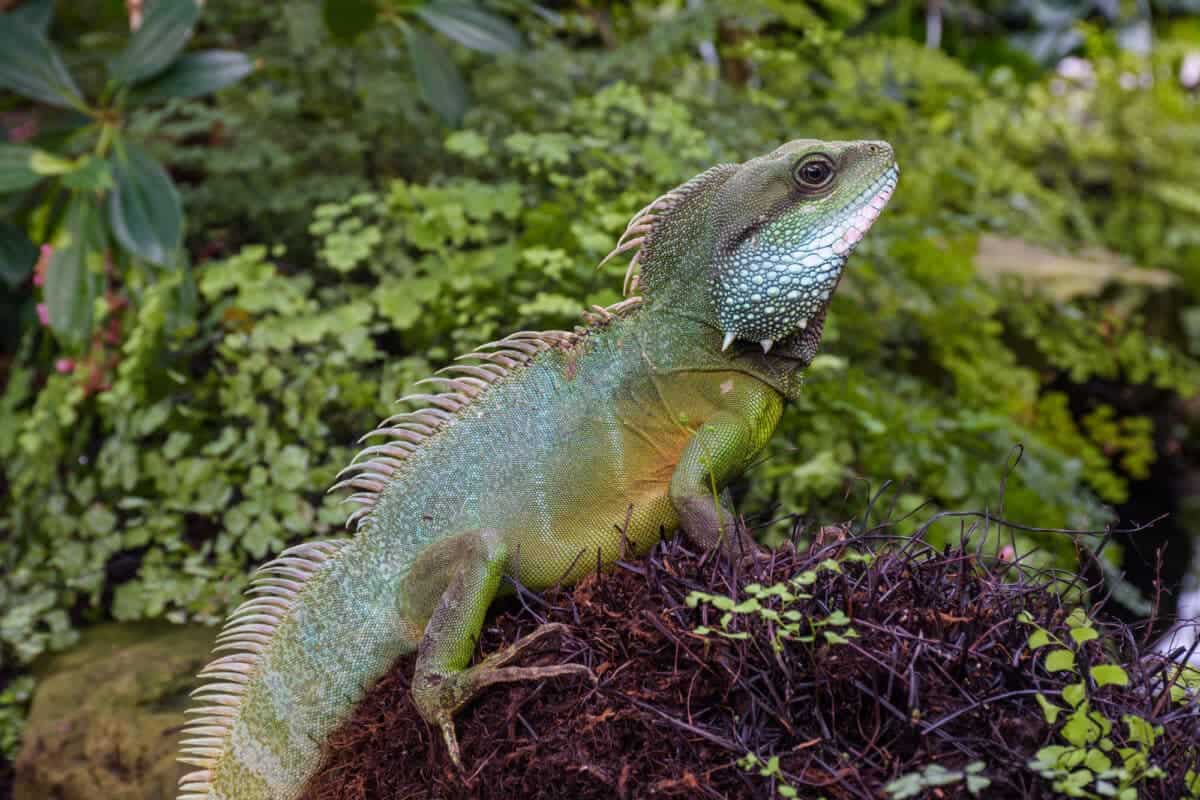
Green iguanas are naturally wild animals, and they will defend themselves if they feel attacked or provoked. The trick to avoiding bites is to avoid circumstances that can cause such a reaction. Giving the iguana room to roam and explore on its terms is one of the greatest methods.
It’s also important to constantly watch their conduct and understand their body language. It is advisable to give the iguana some space until it calms down if it exhibits signs of stress or hostility, such as puffing up its chin or bobbing its head.
Check out: Eyelash Viper bite.
Effective Handling Methods
Effective handling methods are essential for avoiding green iguana bites. It’s crucial to support an iguana’s complete body when handling it; never hold it by the tail since this could make it feel threatened and lash out in defense.
Additionally, avoiding overly squeezing or restraining them is crucial because doing so might result in stress and discomfort. Finally, remember to keep your hands away from an iguana’s pointed fangs and claws when touching one.
Feeding Techniques
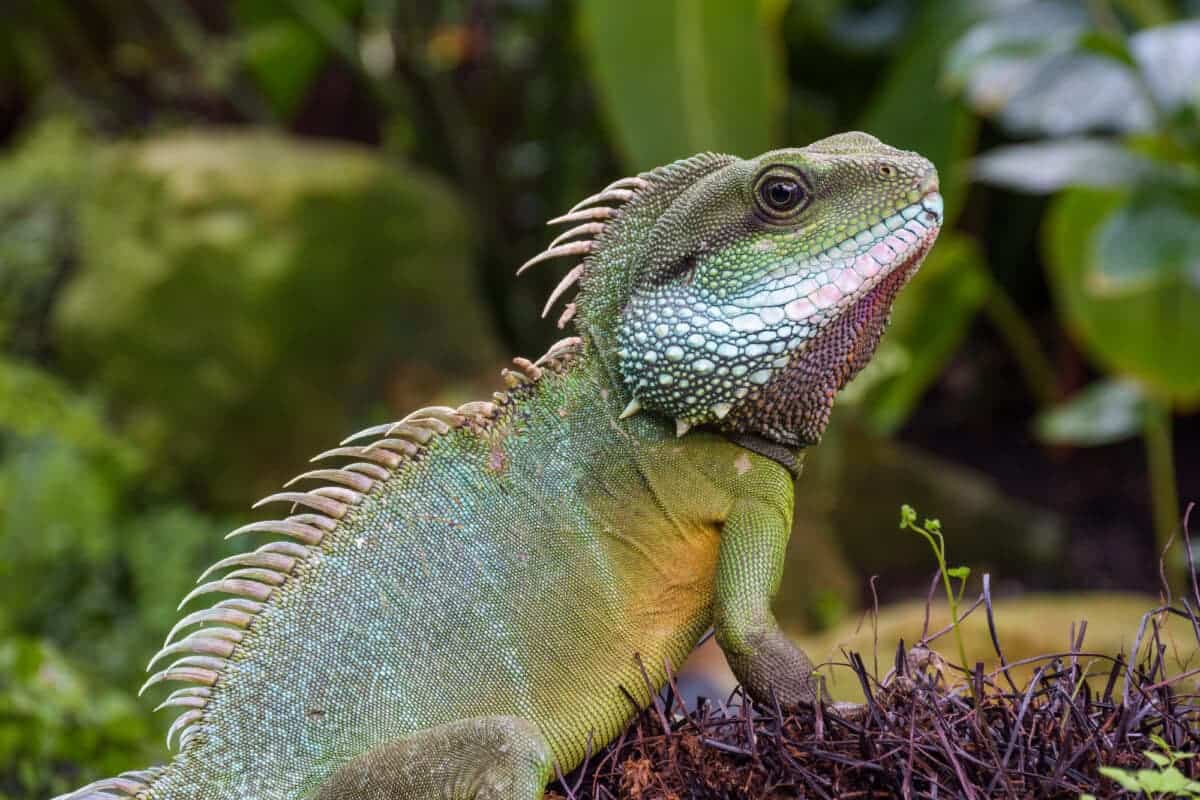
Lastly, using the right feeding techniques is crucial for avoiding green iguana bites. Iguanas shouldn’t ever be hand-fed because doing so teaches them to associate your hand with food and increases their likelihood of biting. Instead, provide them access to food by placing it in a dish or on a surface nearby. To keep them healthy and avoid biting due to malnutrition or discomfort, it’s crucial to ensure that their diet is balanced and rich in calcium and vitamin D.
Last, but not least, make sure to wash your hands before fully and after handling food, as the smell may stay on your skin and tempt an iguana to bite. By heeding these recommendations and implementing the essential safety measures, you can help ensure your green iguana stays healthy, content, and unaggressive.
Taking Care of an Iguana Bite
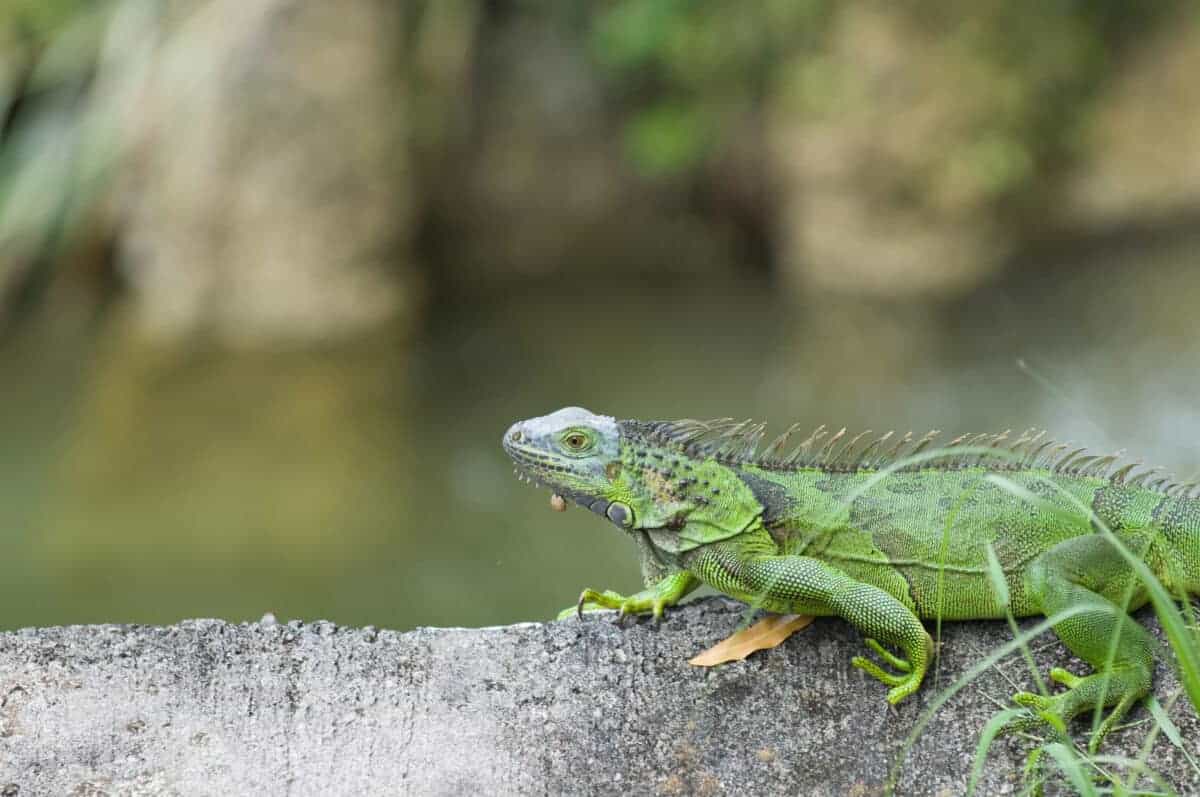
Act Quickly
It’s crucial to act quickly if a green iguana bites you. First, maintain your composure because iguanas can get more agitated by rapid movements or stress. Then, carefully pry the animal’s jaw using your hands or a tool to release its fangs from your flesh. Apply a disinfectant like hydrogen peroxide to the wound after properly cleaning it with soap and water once the iguana loses its hold. Immediately seek medical assistance if the bite is serious or excessively bleeding.
Clean the Wound and Check for Infections
Keeping a close eye out for signs of infection after cleaning the wound is crucial. If left untreated, pathogens like Salmonella, which can cause major health issues, may be carried by green iguanas in their mouths. Keep the wound covered with a sterile dressing, and change it periodically to reduce the risk of infection. As prescribed by your doctor, apply antibiotic ointment to the affected region. Avoid picking at scabs and keeping the wound in an unclean environment.
Seek Medical Help
In some situations, getting medical help after an iguana bite may be necessary. If the wound is severely bleeding or exhibiting infection symptoms, such as redness, swelling, or pus, seek emergency medical attention.
Additionally, if you experience fever, nausea, or diarrhea after being bitten by an iguana, you should contact a doctor. These might be symptoms of a Salmonella infection. Last but not least, contact your local animal control department to report the occurrence and find out whether rabies or other illnesses may cause concern if the iguana wasn’t your pet and you’re unaware of its health status.
Key Points
| Green iguanas can reach six feet in length and can be very defensive if they feel threatened, leading to bites with their powerful fangs. |
| Bites may cause pain, bleeding, edema, bacterial infections, and the possibility of fracture or bruising from their tail. |
| To prevent biting, owners should observe the lizard’s body language, treat them gently, and avoid harsh play. |
| If bitten, owners must clean the wound with soap and water and seek medical help if infected or bleeding heavily. |
| Following these tips helps ensure a safe and healthy relationship between the owner and the iguana. |
The Bottom Line
Although green iguanas are intriguing animals, it’s important to remember that they are still wild animals with unpredictable behavior, even when kept as exotic pets. Serious damage can result from a green iguana bite, especially if it becomes infected. Taking the required safety measures as a responsible owner is crucial to prevent getting bitten by your pet iguana.
This entails observing their body language, treating them gently, and refraining from harsh play. If you are bitten, immediately obtain medical help, and don’t be afraid to ask an experienced animal trainer for advice.
You may have a long-lasting, joyful relationship with your green iguana if you take the right precautions and care for it!
Thanks for reading along! For more, check out our related article links below.
Next up:
- How To Deal With A Bearded Dragon Bite
- The Northern Pacific Rattlesnake Bite
- Mighty Komodo Dragon Bite
- What To Do After A Red-Bellied Black Snake Bite
- How Can You Avoid Getting Bitten By A Yellow Sac Spider
- The Northern Copperhead Bite
- Washington’s Western Rattlesnake
Join our Forum for free today!

- Huge Pet Bison Breaks Into House - July 22, 2024
- Giant Black Bear Surprises Beachgoers by Emerging from the Ocean in Florida - July 22, 2024
- Brave Man Plays Instrument While Huge Bear Caresses His Shoulder - July 22, 2024

